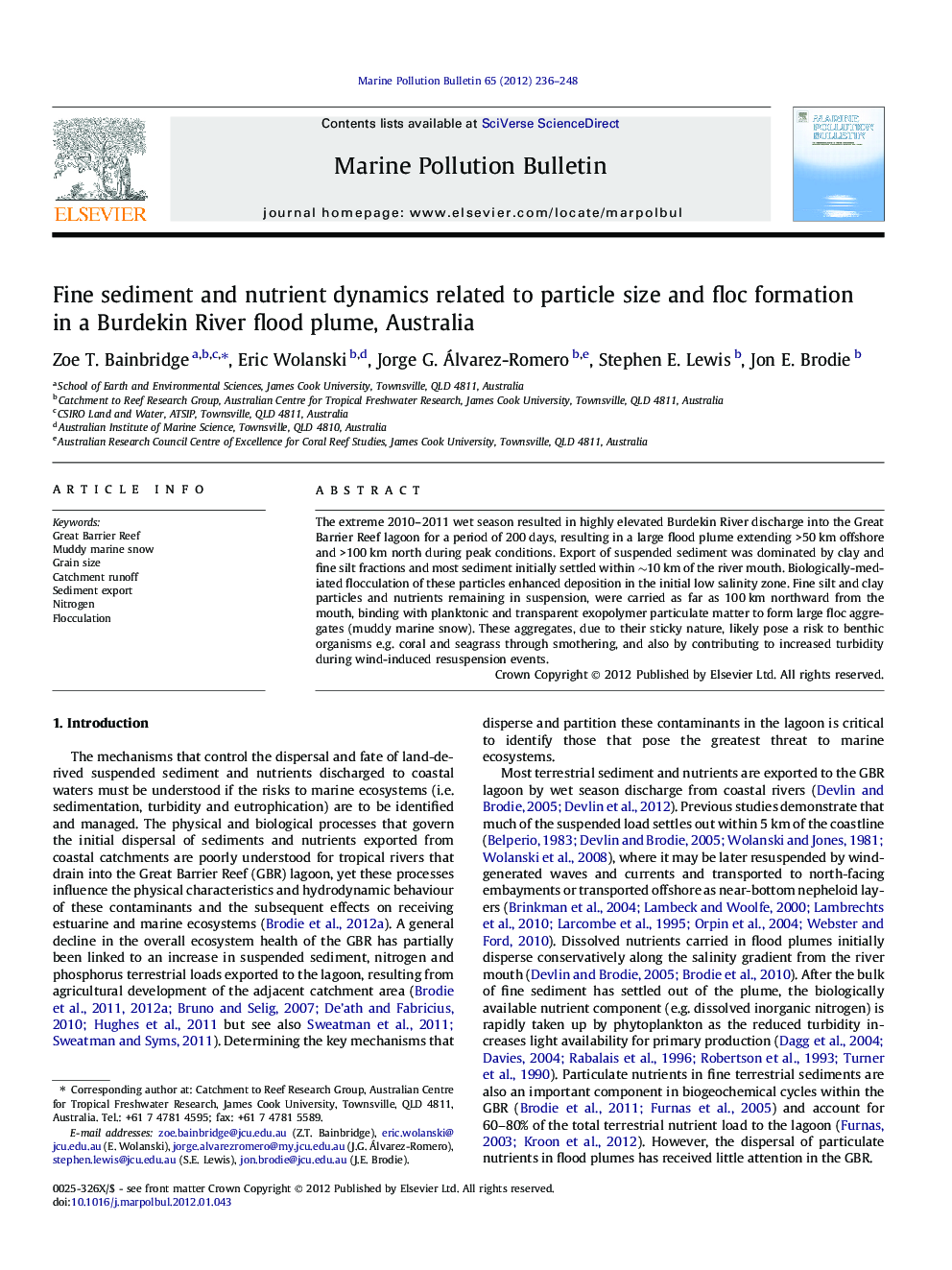| Article ID | Journal | Published Year | Pages | File Type |
|---|---|---|---|---|
| 6360290 | Marine Pollution Bulletin | 2012 | 13 Pages |
The extreme 2010-2011 wet season resulted in highly elevated Burdekin River discharge into the Great Barrier Reef lagoon for a period of 200Â days, resulting in a large flood plume extending >50Â km offshore and >100Â km north during peak conditions. Export of suspended sediment was dominated by clay and fine silt fractions and most sediment initially settled within â¼10Â km of the river mouth. Biologically-mediated flocculation of these particles enhanced deposition in the initial low salinity zone. Fine silt and clay particles and nutrients remaining in suspension, were carried as far as 100Â km northward from the mouth, binding with planktonic and transparent exopolymer particulate matter to form large floc aggregates (muddy marine snow). These aggregates, due to their sticky nature, likely pose a risk to benthic organisms e.g. coral and seagrass through smothering, and also by contributing to increased turbidity during wind-induced resuspension events.
⺠We studied the extreme 2010 - 2011 Burdekin River discharge into GBR lagoon, Australia. ⺠River suspended sediment export dominated by clay and fine silt fractions. ⺠Biologically-mediated flocculation enhanced sediment deposition in low salinity zone. ⺠Remaining fine silt and clay particles carried 100 km northward from river mouth. ⺠Transformation into muddy marine snow likely increases risk of terrestrial sediments.
